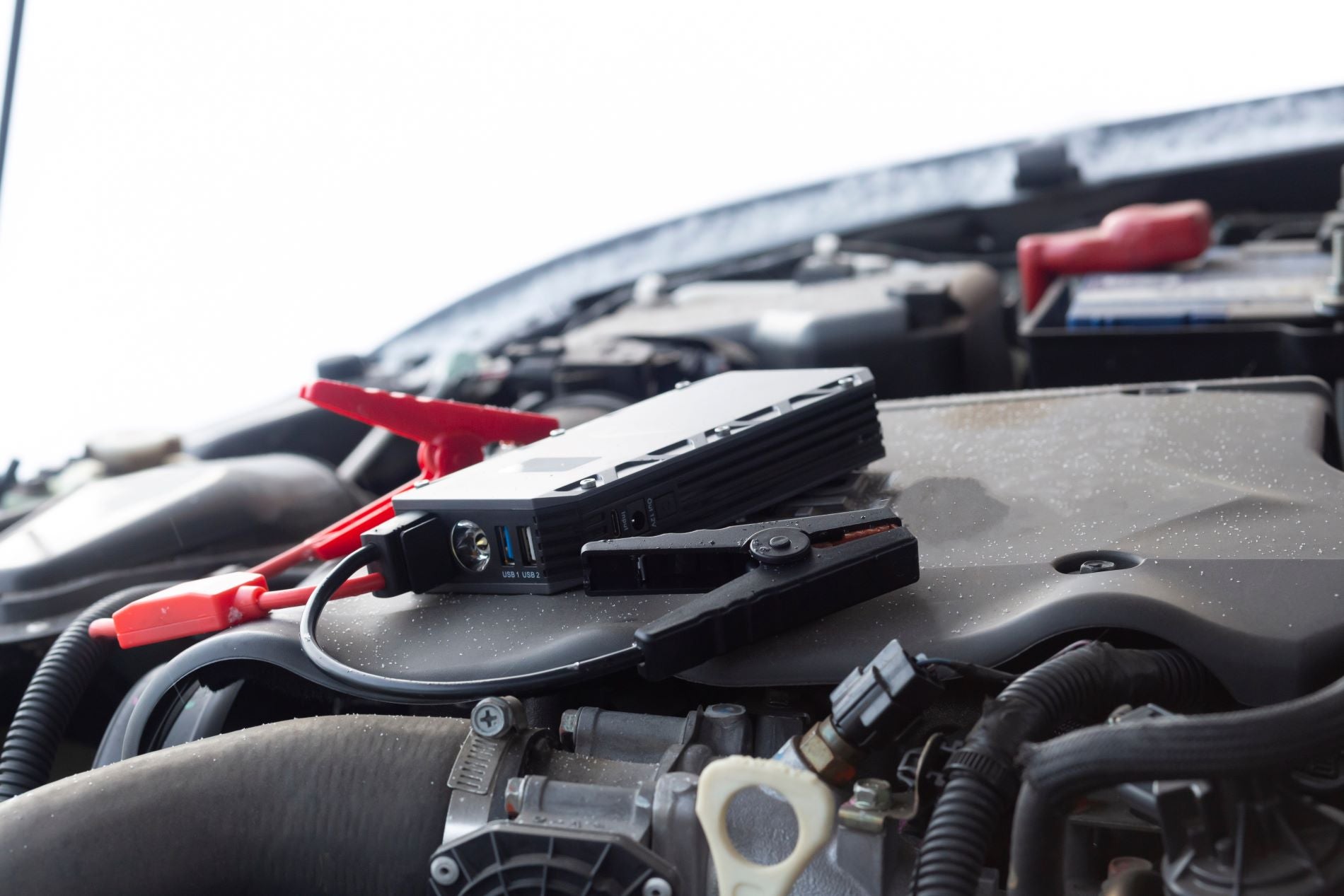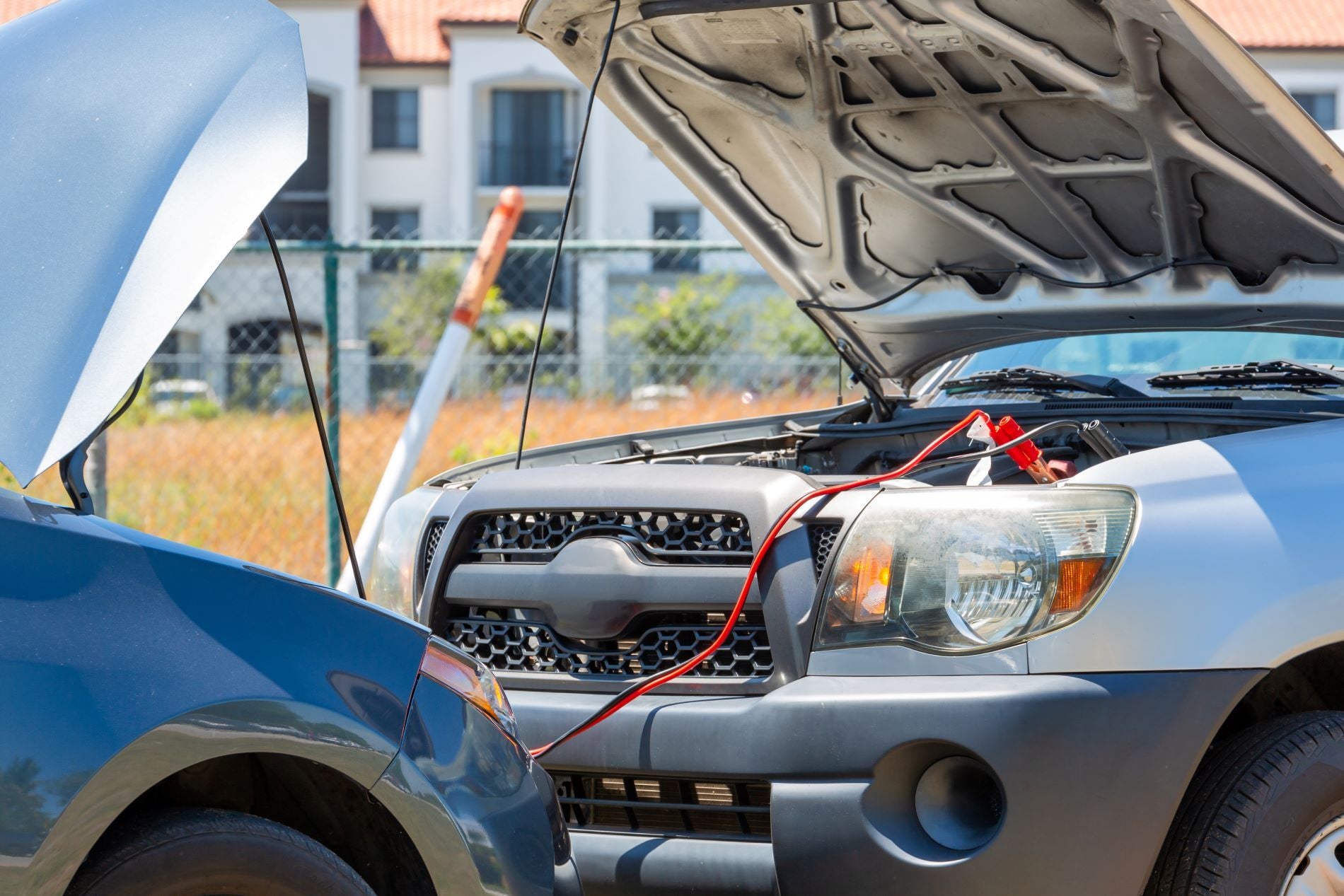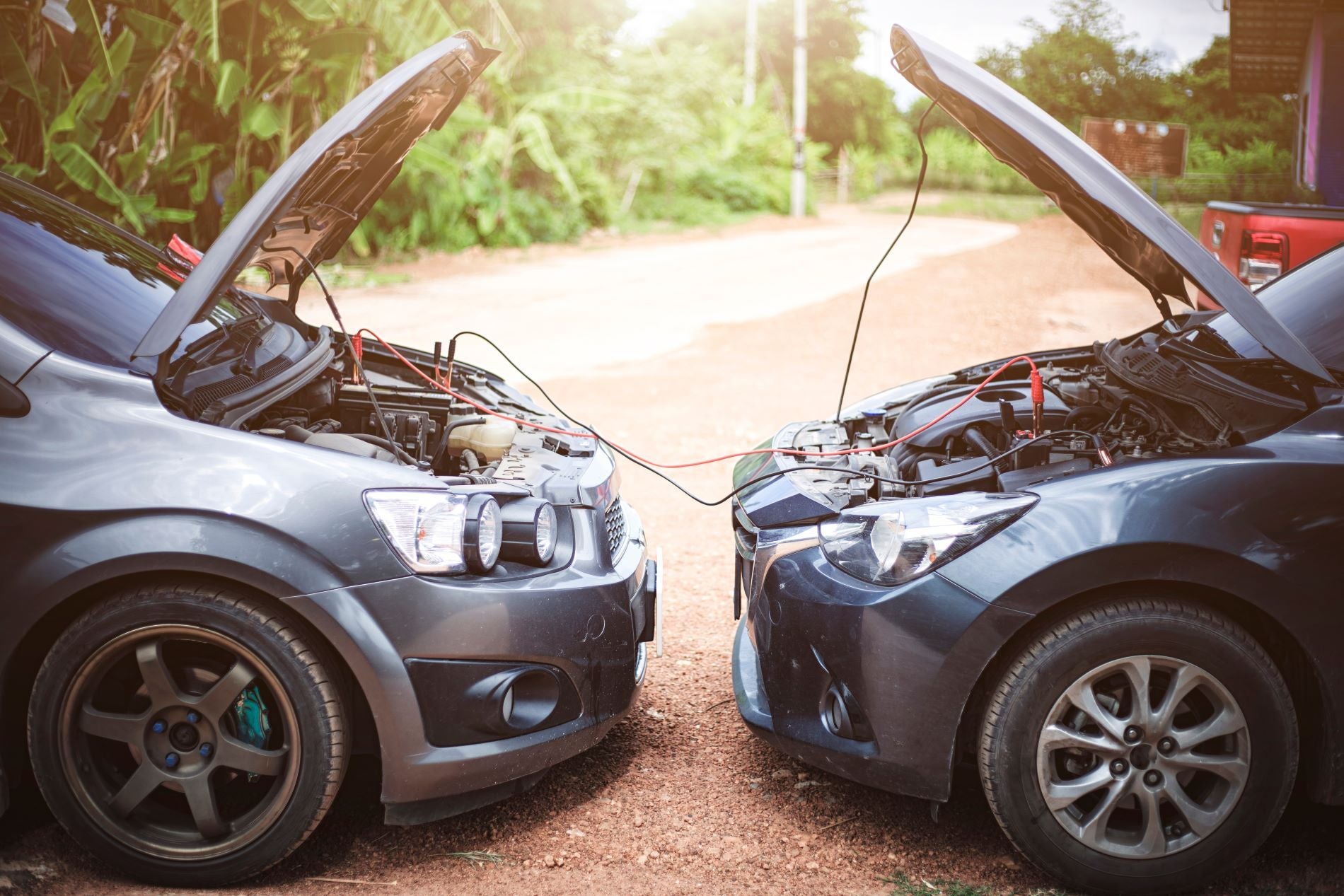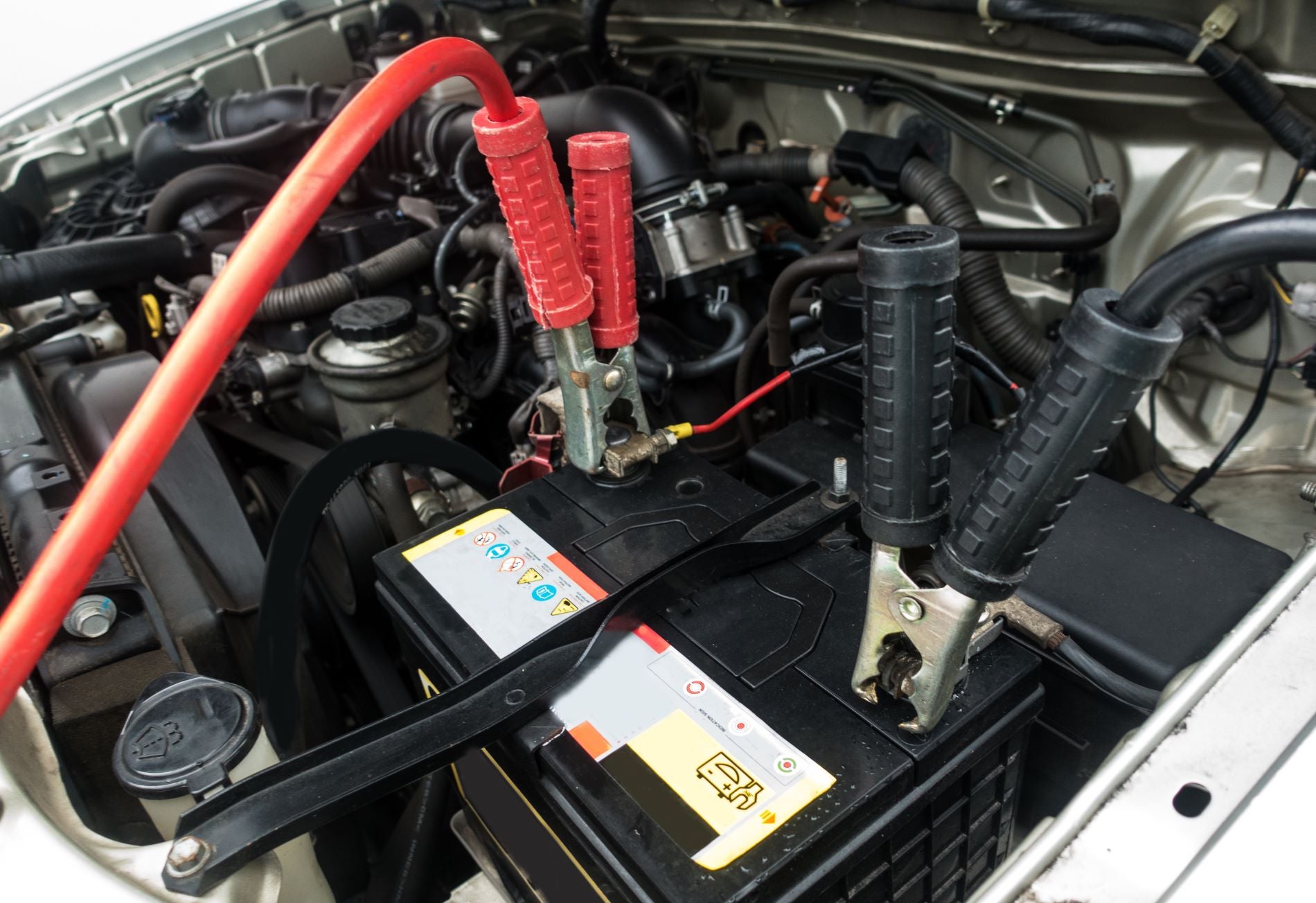How Long Does It Take To Jump A Car?

Jumping a car is an essential skill for any driver. When your vehicle fails to start, knowing how to safely jump it can get you back on the road quickly and easily.
But how long does it take to jump a car? The answer depends on several factors, but with the right preparation, you can usually jump your car in less than 15 minutes.
Let's explore what's involved in jump starting a car and how you can do it as efficiently as possible. Check out our Jump start step by step guide below!

Prepare the Vehicle
Before you get started, let's make sure your vehicle is properly prepared - it'll only take a few minutes!
First, safely park the vehicles close enough so that you can attach jumper cables from one car to the other car.
Make sure that both cars are turned off and all emergency supplies are within reach before proceeding.
Also, check that both batteries are free of corrosion or dirt – this will ensure a proper connection when attaching the cables.
Lastly, determine which battery connections should be used for each car, usually marked as positive (+) and other end negative (-).
With these steps in place, you're ready to jump start the vehicle.

Prepare the Booster Vehicle
You'll need to start by connecting the jumper cables. Make sure the positive and negative clamps are secured on each of the vehicles before you turn anything on.
Next, ensure that the booster vehicle is running with a good battery so it can provide enough power to jumpstart your car.

Connect the Jumper Cables
Connecting the jumper cables may seem intimidating, but with a few simple steps, you can get your car running again in no time!
Begin by testing the battery with an engine diagnostics tool to assess its charge. Once you've determined that it's in need of sufficient charge for a jump, park the booster vehicle facing yours and pop open both hoods.
Connect each red cable clamp to the positive terminals of each battery (the positive terminal will typically be marked with a “+” sign). Then connect one black clamp to the negative terminal on the booster vehicle and attach the other black clamp to an unpainted metal surface under the hood of your car.
This will complete your connection, and you'll be ready to start your car! Be sure not to touch any metal surfaces while connecting or disconnecting jumper cables as they may cause sparks which could ignite fuel vapors in either engine bay.
As long as you follow these steps precisely, it should only take around 10-15 minutes for your car to be up and running again.
Ensure the Booster Vehicle is Running
Once you've connected the jumper cables, get the booster vehicle running - it'll only take a few minutes, and then you're ready to go! Before starting the booster car, take a moment to assess its battery. Make sure all connections are secure so that power is properly transferred between vehicles. Inspect the cables for any fraying or damage - if so, don’t attempt to jumpstart the dead car.
To start the booster vehicle, turn on its ignition and wait until it's running normally before proceeding. If necessary, give it some gas so that its engine does not stall out. The process of getting your booster car running should only take a couple minutes at most. Once it is up and running you can begin jumpstarting your dead car!
Jump Start the Vehicle
After ensuring both batteries are connected properly, give it a go and see if your vehicle starts. Make sure to take the necessary safety precautions when jumpstarting a car; wear protective goggles, gloves, and clothing, and make sure the clamps are securely attached to the terminals of each battery.
Also, keep in mind that jumpstarting can be dangerous, so make sure you have basic knowledge about battery maintenance beforehand. If all is good, get into the booster vehicle and start it up while making sure it’s in Neutral or Park depending on your car’s transmission type. While doing this, keep an eye out for any sparks coming from either vehicle's battery terminals as they may indicate a poor connection or other issue.
Once the booster has your jump started car is running smoothly, turn off its engine but leave its ignition key in the On position. Now it's time to start up your dead vehicle by turning its ignition key to On – if successful, you should hear the engine running!
Leave both cars running for several minutes before carefully disconnecting them, and enjoy driving away with a fully charged battery!
Remove the Jumper Cables
Now that you've successfully jump-started your vehicle, it's time to remove the jumper cables with lightning speed--you'll be back on the road in no time!
Before you do so, however, there are a few safety tips to keep in mind. First and foremost, make sure both vehicles are off and the keys are out of the ignition. This will prevent an electrical surge from occurring when removing live battery and the jumper cables.
Additionally, if either vehicle has plastic parts near the battery terminals, cover them with a cloth or towel before disconnecting the cables to avoid any sparks or fires.
When you're ready to disconnect them, start in reverse order by removing the black negative cable first and then follow with the red positive cable. This order is important as it helps protect your battery's health from damage caused by electricity arcing between them during disconnection.
After removing both cables be sure to take a few moments to check that all connections were made properly and your vehicle is running normally again before driving away.
Check for Proper Functioning of the Jumped Car Battery
Ensure everything's working as it should by double-checking your vehicle is operating normally before you hit the road.
Check the voltage of the battery using a multimeter to make sure it has a full charge.
Test the alternator and battery's condition by starting your engine and seeing whether or not the voltage reading changes while running. If the reading increases, then you know that your alternator is functioning properly and charging your battery correctly. If not, then it may need to be replaced or serviced.
Additionally, check other components like headlights, windshield wipers, turn signals, and brakes to make sure they're all in proper working order.
Once you've finished checking all of these components, make sure that you take a few minutes to drive around town and see how well your vehicle runs on its own.
This will help identify any issues that were missed during your pre-trip inspection process so that you can address them before they become bigger problems down the line.
Doing this prevents any unexpected breakdowns from happening mid-trip due to an overlooked issue.
Taking these precautions will give you peace of mind knowing that when you do get back on the road after jumpstarting your car, it'll be ready for whatever comes its way!
Frequently Asked Questions
What type of jumper cables should I use?
You've got your anachronistic old-school jumper cables in hand, but do you know what type of cable to use?
It's important to match the battery capacity of both cars to ensure the most efficient jump start.
To keep your battery maintained and working optimally, make sure you choose a cable with proper amperage and gauge for a safe connection.
Battery maintenance is key when it comes to jump starting your car; so pick the right jumper cables and be prepared for the next time your battery decides to fail!
Click here to learn more about jump stating a car!
Is it safe to jump start a car with a dead battery?
Jumping a car with a dead battery is possible, but it's important to take all necessary safety precautions.
When jump starting your car, make sure that you use the right type of jumper cables and follow the instructions on how to properly attach them.
Be aware that jump starting may damage components in your car if not done correctly, so always consult an expert for advice if you're uncertain about any aspect of the process.
Additionally, make sure to invest in regular battery maintenance as this can help reduce the chances of needing to jump start your vehicle.
Here is a video on how to jump start a car with a dead battery.
How often should I check my battery?
You can easily maintain your car battery so it runs optimally for years.
Picture yourself checking your battery every month or two, ensuring the connections are clean and free of corrosion. This simple task only takes a few minutes and can help you avoid costly repairs down the line.
Make sure to test your battery regularly, too, as this'll give you an accurate reading on its current condition.
With proper battery maintenance and testing, you'll be driving worry-free in no time!
Click here how to learn more about charging and checking your battery.
Are there any risks to jump starting a car?
Jump starting a car is a way to get your vehicle running if the battery has lost its charge, but it's important to be aware of the risks involved.
If the charge time isn't monitored properly or you don't have the right equipment, you could end up damaging both batteries and even cause an electrical fire. This is why proper battery maintenance and having a reliable set of jumper cables are so important.
Additionally, jump starting can also cause damage to other parts of your car, such as the alternator or starter motor, so make sure to check with your mechanic before attempting it.
Click here to see all the risk with jump starting your car.
Will a jump start fix all battery problems?
You may have heard the adage, 'A stitch in time saves nine' - and when it comes to your car's battery, this couldn't be more true.
Jump starting a battery can temporarily fix the problem, but for lasting solutions you'll need to look into cold cranking and other battery maintenance services. While a jump start might get you back on the road quickly, not all battery problems will be solved by this method.
To ensure long-term success, it's best to seek professional help or consult with an auto mechanic.
Click here to see all the reasons why your car battery might fail.
Conclusion
You're all done! Jump starting your car doesn't have to be a long and tedious process.
In just a few short steps, you can be back on the road in no time. You can rest easy knowing that if your battery ever dies again, you have the skills to get it jump started quickly and safely.
Don't forget to check for proper functioning after you've removed the jumper cables—your peace of mind is worth it!
Now go enjoy your day; you deserve it.




